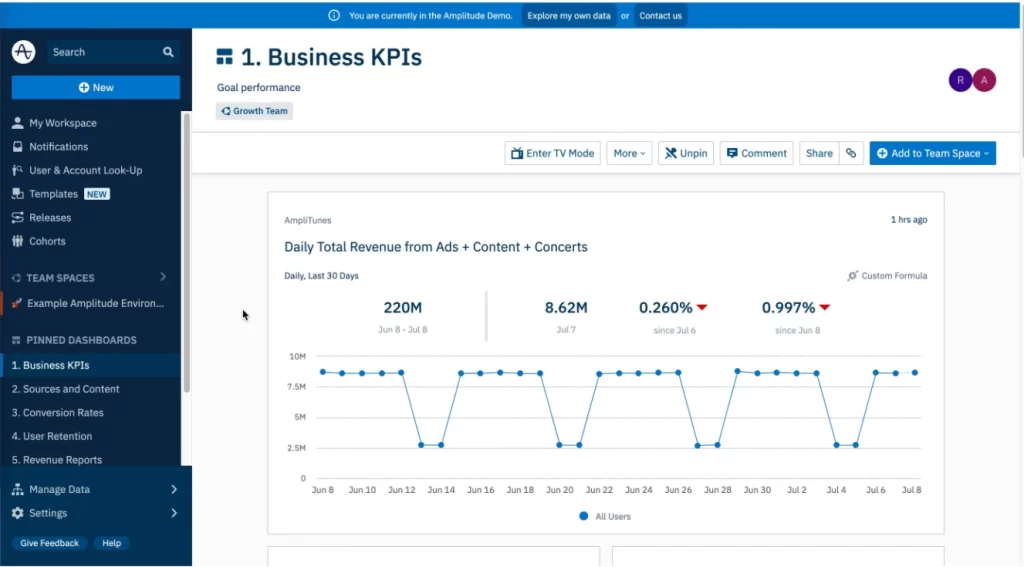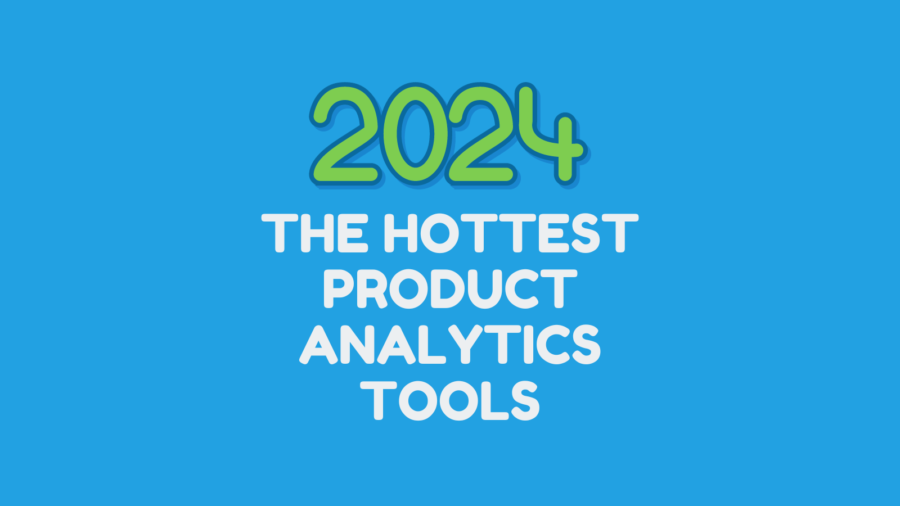Introduction
Amplitude has emerged as a game-changing product analytics platform, empowering businesses to derive valuable insights from their data, driving decision-making, and enhancing customer experiences. Founded in 2012 by Spenser Skates, Curtis Liu, and Jeffrey Wang, Amplitude has rapidly evolved into a dominant force in the realm of product analytics. Their vision was to create a comprehensive solution that enables organizations to track user behavior, understand product performance, and optimize user experiences effectively.
Application 1: User Behavior Analysis
One of the primary applications of Amplitude lies in its robust user behavior analysis capabilities. With Amplitude, businesses can comprehensively track how users interact with their products or services. This includes identifying key user actions, monitoring user funnels, and visualizing user journeys. The advantage of this application is that it provides businesses with granular insights into user behavior, helping them identify pain points, drop-offs, and areas for improvement in their product or service. Armed with this knowledge, businesses can optimize their user experience, enhance customer satisfaction, and boost retention rates.
However, a potential disadvantage of user behavior analysis in Amplitude is the risk of information overload. The platform generates a vast amount of data; without proper focus, businesses might struggle to pinpoint the most critical insights. Careful attention must be given to data interpretation, ensuring that actionable takeaways are extracted from the sea of information.
Application 2: Funnel Analysis
Amplitude excels in funnel analysis, enabling businesses to track user progression through specific sequences of actions leading to conversions or desired outcomes. This application visually represents conversion rates at each step, helping businesses identify bottlenecks and areas where users drop off from the intended path. Funnel analysis in Amplitude is highly advantageous as it facilitates data-driven decision-making, allowing organizations to optimize their funnels for better conversion rates and higher overall efficiency.
Nonetheless, a potential drawback of funnel analysis lies in its potential complexity. For businesses with intricate product flows and multiple conversion paths, the visualization and interpretation of funnel data can become convoluted. This requires a solid understanding of the platform and an ability to simplify complex funnels to derive meaningful insights.
Application 3: Cohort Analysis
Amplitude’s cohort analysis capability allows businesses to segment users based on shared attributes and analyze their behavior over time. Cohort analysis is invaluable in understanding how user engagement and retention change for different user groups as they interact with the product. The advantage here is that businesses can gain insights into long-term user behavior patterns, measure the impact of product updates, and devise strategies to improve user loyalty.
However, one potential limitation of cohort analysis is the risk of oversimplification. Creating relevant cohorts requires careful consideration of the attributes selected, and if not done thoughtfully, businesses may end up with misleading or inconclusive results.

Application 4: A/B Testing and Experimentation
Amplitude facilitates A/B testing and experimentation, empowering businesses to make data-driven decisions when comparing different versions of their products or features. By setting up experiments, businesses can analyze user behavior and determine which variant performs better. This application provides the advantage of optimizing product features, design elements, or marketing strategies based on solid evidence, resulting in improved user engagement and conversions.
One possible drawback of A/B testing is the necessity for an adequately sized user base to yield statistically significant results. For newer or smaller businesses, this may limit the extent to which A/B testing can be employed effectively.
Application 5: Retention Analysis
Understanding user retention is crucial for any business’s long-term success. Amplitude allows businesses to perform retention analysis, helping them track user engagement over time and identify factors influencing user retention or churn. The advantage of this application is that it enables organizations to focus on improving user loyalty, fostering a loyal customer base, and maximizing customer lifetime value.
Nevertheless, interpreting retention data accurately can be challenging. Various internal and external factors can influence user retention, and attributing causality requires a nuanced understanding of the data and external factors at play.
Application 6: Behavioral Segmentation
Amplitude facilitates behavioral segmentation, which involves dividing users into distinct groups based on their actions, preferences, or characteristics. This application empowers businesses to understand different user segments better, personalize experiences, and tailor marketing strategies for specific audiences. The advantage here is that businesses can enhance user engagement, conversion rates, and overall customer satisfaction by catering to the unique needs of each segment.
One potential disadvantage of behavioral segmentation is the risk of overlooking important cross-segment trends. While focusing on individual segments is essential, businesses should also be cautious not to miss insights that may emerge when analyzing the interactions between different segments.
Application 7: Impact Analysis
Amplitude’s impact analysis capability allows businesses to measure the effectiveness of product changes or new features. By comparing user behavior before and after specific updates, organizations can gauge the impact of these changes on key metrics. The advantage of this application is that it enables data-backed decision-making, helping businesses prioritize initiatives that have the most significant positive impact on their bottom line.
However, conducting accurate impact analysis requires careful consideration of external factors that might also influence user behavior during the analysis period. Isolating the impact of a specific change can be challenging, but it is essential to avoid drawing inaccurate conclusions.
Conclusion
Amplitude has evolved into a powerful product analytics platform that empowers businesses to harness the full potential of their data. From user behavior analysis to impact analysis, cohort analysis to retention analysis, Amplitude offers a comprehensive suite of tools for data-driven decision-making. By leveraging the platform’s capabilities, businesses can optimize their products, improve user experiences, and drive growth and success in today’s competitive market.
While Amplitude’s applications offer numerous advantages, they also come with potential challenges. The key lies in using the platform judiciously and interpreting the data thoughtfully to derive actionable insights. As businesses continue to rely on data to drive their strategies, Amplitude remains an essential ally in their pursuit of excellence in product development and customer satisfaction. By combining the power of Amplitude with a deep understanding of their customers, businesses can chart a path to sustainable growth and long-term success.
You can also check other Unleashing the Power of Product Analytics series tools.





